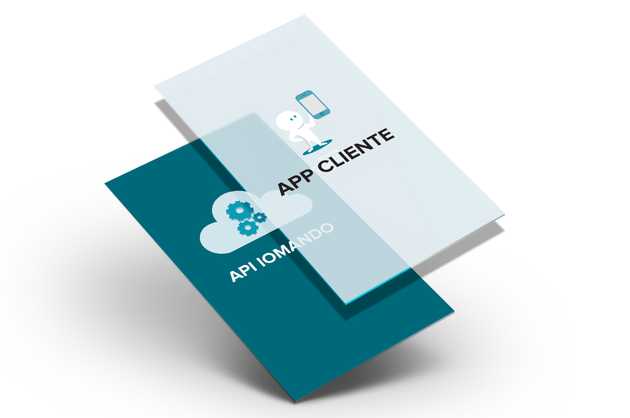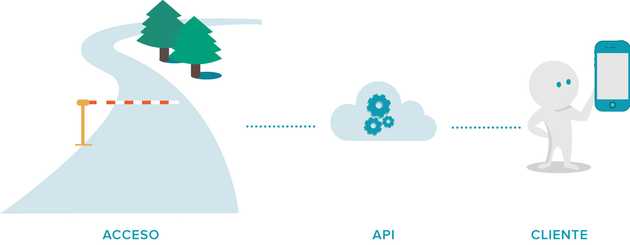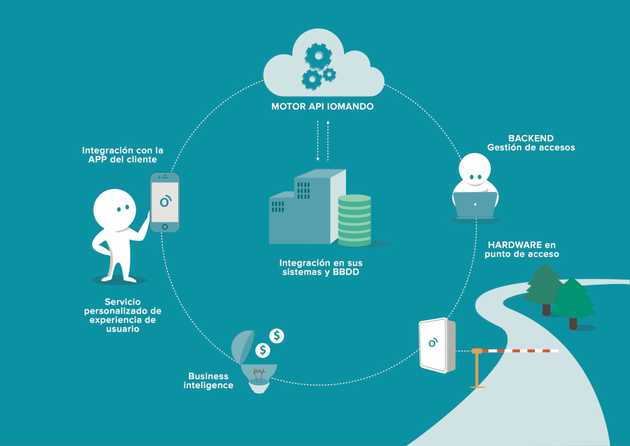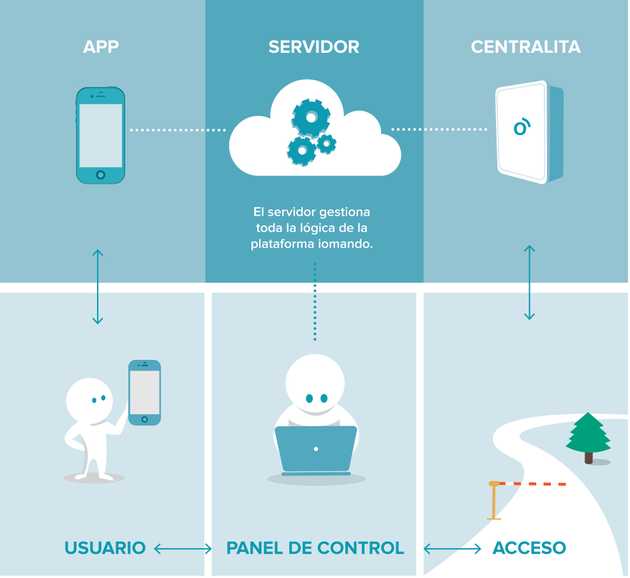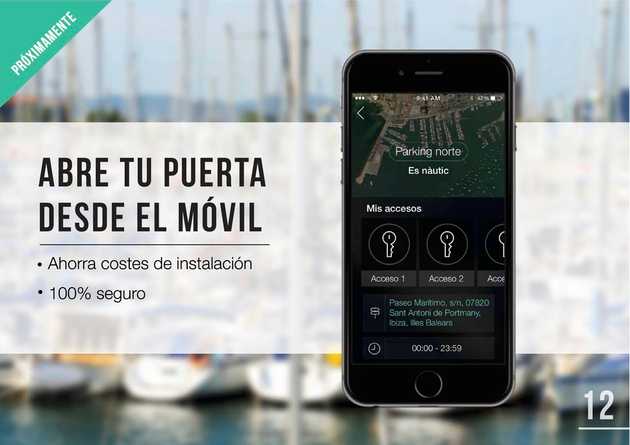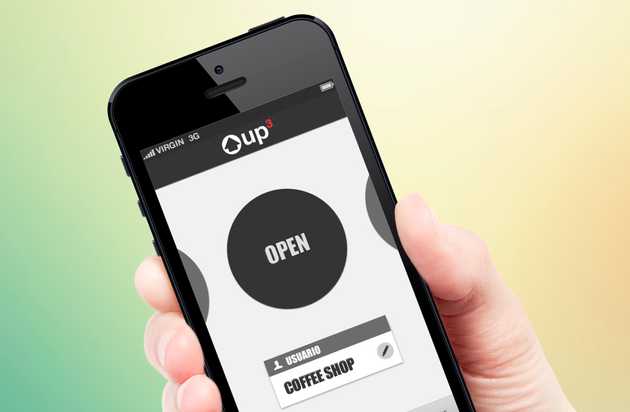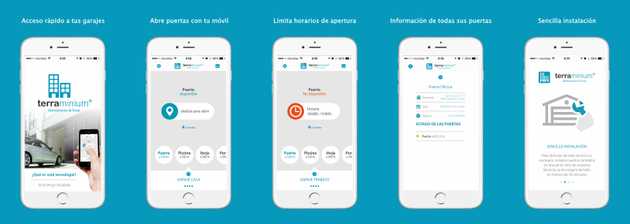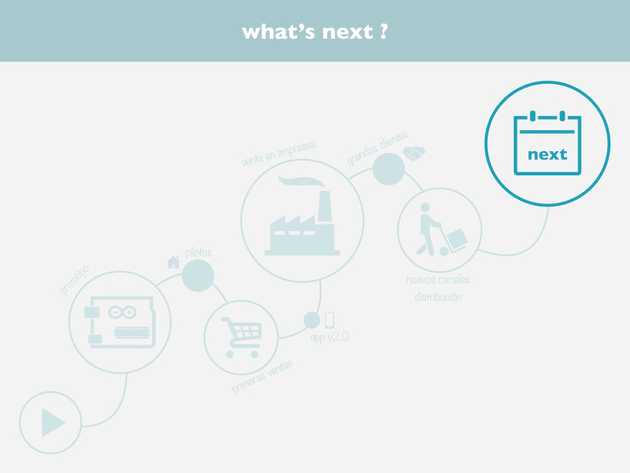iomando API
Introducing iomando API, the toolkit that will allow developers to create, build and integrate new products on top of our access technology.
Back in 2012, when we first launched iomando, we did it with a clear goal in mind: we wanted to create a better access experience through mobile technologies. The first step of such quest was to build a cloud-managed keyless access solution that runs on mobile devices. Which in plain English just meant opening doors using a phone.
And despite getting it wrong — not just once — and not knowing much what we were doing… we persisted. Slowly but surely we kept delivering on our promise to create a true accessibility platform for the mobile era.
As we’ve walked down this path, more and more, we believe that technology will redefine what it is possible with access control. But in order to fulfill this vision, we asked ourselves “what’s next for iomando” — beyond opening doors with a smartphone.
And the answer to this question is our boldest and most ambitious step since our foundation and what we believe will become the future of our company.
Today, we are introducing the iomando API, a licensing program that will allow developers to, create, build and integrate new products on top of our access technology.
What Is It?
The iomando API is the toolkit we’ve developed to allow developers to create, build and integrate new products upon our access technology. This means that if you want to create (or already have) a service that could somehow benefit from accessibility, you can now seamlessly integrate our access technology into your service. By integrating with the iomando API we’ll do the heavy lifting and handle all the access control operations behind the scenes so you can focus on your business — what you do best.
Moreover, as you will see later with our launching partners, we are also extending our API usage to third parties that want to develop full-fledged applications on top of our existing technology. For instance, if you have a great idea that revolves around access management, you will also be able to leverage all of our existing technology from the get-go and start building your product right away.
Why We Did It?
A few months ago, we realized that iomando performed at its best when operating at a large scale.
Despite our product works well in small places like houses or shops — because the underlying technology enables features that are simply not possible with old keys and remotes — we are not solving a “real problem” in these scenarios, we are a more convenient feature.
We struggled for a long time trying to figure out our true north — what problem we were ultimately solving. iomando’s core technology fits within a lot of different use cases, and while this might sound like a good thing, it has distracted persuaded us to be a jack of all trades, yet we ended up being master of none. The kind of mistake you can’t afford when you are starting up and one we learned the hard way.
iomando API realigns our vision with the core nature of our product and technology. It defines a new paradigm, and makes the scaling of the product faster, beyond our current salesforce capabilities.
From the very beginning, we knew we couldn’t fulfill this vision alone — under the operating framework of our business model. We are aiming for a huge change, and if we want to push iomando as never before, we are going to need a ton of help.
Here’s where the iomando API enters the game and the rationale behind its existence: instead of outcompeting everybody at their own game, maybe we need to choose wisely which battles we want to fight for — and join forces with others in the ones we decide not to, so they can flourish on an ecosystem fueled by iomando’s technology.
In tech parlance, we aim to build a platform. One where our API developers can integrate their services or create new products on top of our technology. Thus iterating and bringing them to the market faster, and ultimately focusing on what they do best, their business.
Who Is It For?
When you release tools intended for developers to create, you’d have a hard time predicting how the technology will end up being used. You might think you know, but developers’ creativity will always exceed your wildest expectations. This is precisely the beauty of an open platform, and also the reason why we are thrilled with the possibilities this API could unlock for so many industries.
That doesn’t mean we have no clue where our API will end up being used. After quite a while in the market, we did our homework and already spotted a few niches and potential integrators that could derive value from our new API.
From the get-go, we see two natural fits and use cases for iomando API:
- Integration: this is a product or service not directly related to accessibility, that at some point, its development could benefit from accessibility-like features in one way or another. Under this use case, iomando API enters the picture as a feature that delivers value to the integrator existing application.
- Custom development: for lack of a better name, custom development is an entirely new application built around iomando’s technology. It gives third-party developers — whose core business already revolves around accessibility — the possibility to build brand new services from the ground up, leveraging all our access technology and taking advantage of futures developments. Under this use case, developers are able to architecture entirely new lines of business and create growth opportunities for the organization.
To kickstart iomando API adoption, during its development we’ve been closely working with four companies (two integrators and two custom developments) that have already committed to rolling out their products featuring iomando API in the upcoming months.
Smartsea
Smartsea is a prominent Spanish startup that offers a service aimed to yacht clubs, recreational boat owners and harbor managers. On one hand, its app helps boat owners discover facilities, services and unlock all the leisure associated with yacht clubs upon arrival. On the other, it gives essential tools to admins in order to manage their facilities and provide a seamless experience to its visitors.
When the team at Smartsea heard about iomando API, they immediately recognized its potential in combination with their service as an integrator. On top of offering a wide range of features, such as paying for fuel or arrange a dock for a boat upon arrival, with iomando API their customers would be able to literally interact with the yacht club physical facilities.
Here’s when Smartsea meets iomando API, since it provides a way to natively integrate all the yacht club accesses within their app. When a boat owner arrives at the harbor, on top of all the Smartsea features, she also has full control over the accesses right from her smartphone.
Apparcando
Here’s another example of playbook integration, one that also makes us feel nostalgic. Not only because Apparcando is an awarded startup and part of the prestigious acceleration program Lanzadera, but because of what they do.
Apparcando is a service that enables their users to share and monetize their private parking spaces while they are away, working or on vacation, sounds familiar?
If it does, it is because this was precisely our original idea for iomando, the one we deprecated because our customers were more interested in the mobile-based access control technology.
Maybe we entered the market too early, maybe we didn’t know how to deploy such an ambitious project. No matter what, more than two years have passed, and the market seems to have evolved a lot since: the park-sharing era might have come.
Apparcando is not in the business of making hardware to open doors — and that might be the reason they end up being successful. They focus on creating a peer-to-peer marketplace for private parking spaces.
Yet they struggle when it comes to sharing the spaces themselves. Their users have to meet in advance, in person, share keys… a painful process that is neither comfortable for the user nor scalable for the business. Both their growth and customer experience are suffering because of that.
With iomando API integrated within the Apparcando app, their users can share and access parking spaces on demand — just for the time they are granted permissions. Moreover, the entire process is performed transparently in the background, so the only thing their users have to do is select a space, hit open and safely park their cars.
UP3
After these two examples of integrators, let’s move on to the custom development use cases.
The first one is UP3, a door manufacturer based in Spain. They excel in the designing, manufacturing, and distribution of tailor-made aluminum and glass doors for retail applications.
Despite their outstanding craftsmanship, door manufacturing remains a really competitive business. The crowded space has driven margins down to a point that the product has almost been commoditized. UP3 is struggling with an army of no-name competitors trying to outcompete their products with lower-quality devices that solely differentiate on price.
Because of this, UP3, a company that relies on great design and craftsmanship as the main value proposition for their product, has decided to seek another differentiation route in order to break out from this race to the bottom. They have trusted in iomando API to build their own mobile-first accessibility application for their customers to use.
During the time we spent with them helping set up their own custom app, they admitted they tried to create such service on their own in the past. Yet they repeatedly failed because of their lack of knowledge building software solutions.
They know how to manufacture outstanding doors and automatisms, but not mobile applications. iomando API gave them all the tools they needed to develop and deploy a service that integrated with their doors out of the box.
Terraminium
Finally, the last use case of custom development is Terraminium: the largest real estate service provider in Spain, with more than forty thousand properties under management — including parking, buildings, residential areas etc. Like UP3, Terraminium is also competing in a tough environment.
Recently, a new breed of digital-first competitors entered the space, aggressively targeting Terraminium’s with impossibly low fees. Because of that, Terraminium was looking for new growth opportunities and new services to offer to their existing customer base, in order to increase retention rates and LTV across the board.
Long story short, they used the iomando API to build a brand new digital product that allowed their existing customers not only to manage several aspects of their properties but to gain full control over the accessibility. A step ahead from its competition and a unique offering their current competitors simply couldn’t match.
Final Word
When we started iomando, we could have not foreseen this development path for our product. Yet when it all got started, we didn’t fully comprehend the true nature of “the creature” we brought to the market. As the company has evolved, though, some unknowns started to reveal themselves and signaled the marks of the future path that was still ahead of us.
At iomando, we truly care about creating an amazing experience out of access control systems — one that can touch as many people as possible. We can’t think of a better enabler for this vision than the iomando API, tapping on our most valuable asset, our technology, and letting other companies build on top of it.
This way iomando will reach places previously unavailable: yacht clubs across the world, thanks to Smartsea; the retail market, thanks to UP3; thousands of new properties and buildings, thanks to Terraminium; and last but not least, fulfilling our original vision of sharing private parking spaces, thanks to Apparcando.
We believe our product shines the most at scale, and we see in iomando API the best tool to get there. We can’t wait to see what products developers will come up with and all the innovation this will bring to iomando’s ecosystem.
